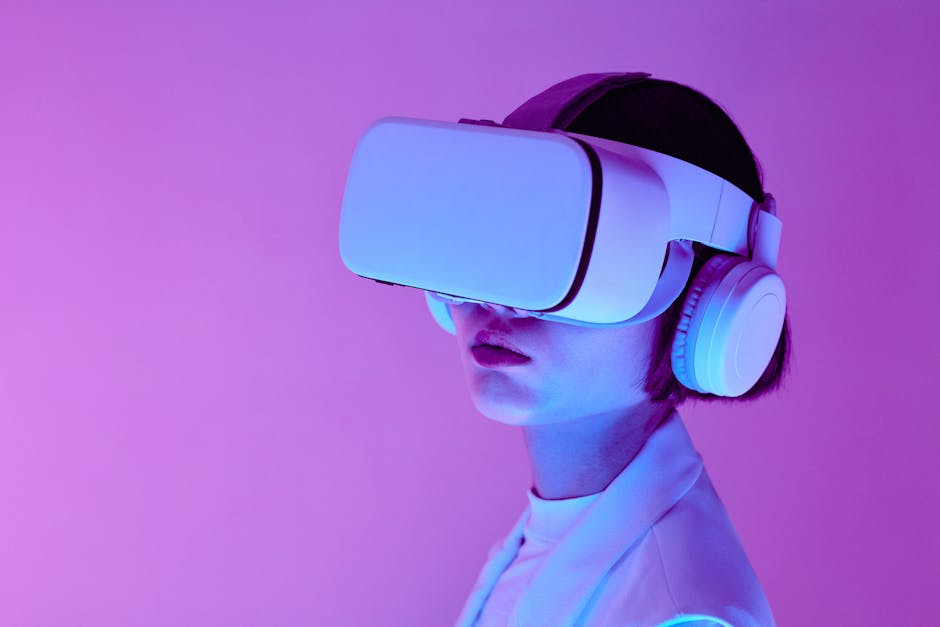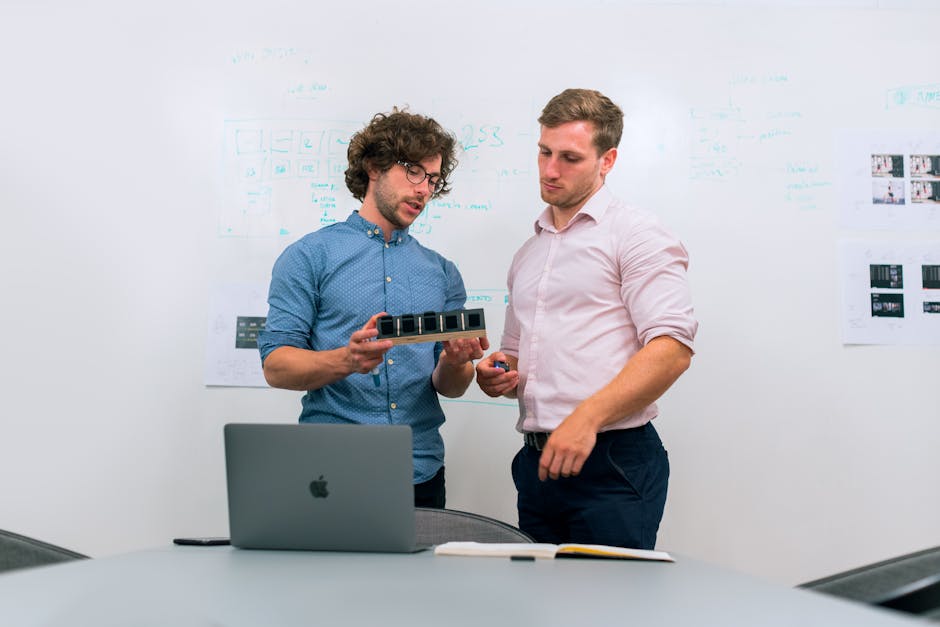Transforming Workspaces: How Virtual Reality is Revolutionizing the Modern Workplace
“Virtual reality is rapidly transforming how organizations approach workplace management, offering immersive solutions for training, collaboration, and space optimization. This article explores how VR technology is revolutionizing corporate environments, the practical applications for HR and facility managers, and what the future holds for virtual workspaces. ”

Transforming Workspaces: How Virtual Reality is Revolutionizing the Modern Workplace
In today's rapidly evolving business landscape, organizations are constantly seeking innovative technologies to enhance productivity, collaboration, and employee experience. Among these technologies, virtual reality (VR) stands out as a transformative force that is reshaping how we conceptualize and interact with the workplace. For corporate HR managers, IT leaders, facility managers, and educational administrators, understanding the potential of VR is becoming increasingly essential.

What is Virtual Reality?
Virtual reality is a computer-generated simulation that creates an immersive, three-dimensional environment users can interact with using specialized hardware such as headsets, gloves, or other devices. Unlike traditional interfaces, VR places users inside an experience, creating a sense of presence that traditional technologies cannot match.
VR technology works by combining near-eye displays with pose tracking, enabling users to control their virtual actions through real-world movements. This creates a fully immersive experience where users can:
- Explore virtual environments that simulate real-world or imagined spaces
- Interact with digital objects and interfaces using natural movements
- Collaborate with others in shared virtual spaces regardless of physical location
Applications of VR in Workplace Management
Immersive Training and Onboarding
Traditional training methods often struggle to fully engage employees or provide realistic scenarios for practice. VR addresses these limitations by creating immersive learning environments that dramatically improve retention and skill development.
For HR managers, VR offers a revolutionary approach to employee onboarding and skills development. New hires can explore virtual replicas of office spaces, practice complex procedures in risk-free environments, and engage with interactive training modules that adapt to their learning pace. This knowledge management approach ensures consistent training experiences while reducing the time senior staff must dedicate to repetitive training sessions.
Enhanced Remote Collaboration
As workforces become increasingly distributed, maintaining effective collaboration presents significant challenges. VR technology offers a compelling solution by creating shared virtual workspaces where team members can interact as if physically present together.

Unlike traditional video conferencing, VR collaboration tools allow participants to share a common virtual space where they can:
- View and manipulate 3D models or data visualizations together
- Read body language and spatial cues that are lost in 2D interfaces
- Conduct workshops with interactive whiteboards and shared documents
- Create persistent virtual workspaces that team members can return to
These capabilities make VR particularly valuable for complex collaborative tasks that benefit from spatial understanding and non-verbal communication. For IT managers implementing collaboration tools, VR represents the next frontier in remote teamwork technology.
Office Space Planning and Optimization
Facility managers face the ongoing challenge of creating workspaces that balance efficiency, functionality, and employee experience. VR provides powerful tools for visualizing and testing space configurations before physical implementation.
Using VR, stakeholders can:
- Walk through virtual prototypes of planned office layouts
- Test different furniture arrangements and workflow patterns
- Gather feedback from employees on proposed changes
- Identify potential issues with accessibility or traffic flow
This approach to office space optimization reduces costly redesign iterations and ensures that physical spaces meet both functional requirements and employee preferences.
Benefits of VR Implementation in the Workplace
Improved Learning Outcomes
Research consistently shows that immersive learning experiences lead to better retention and skill transfer. VR training can improve knowledge retention by up to 75% compared to traditional methods, while reducing training time by 40%. For organizations investing in employee development, these improvements translate to faster onboarding, more effective skill building, and better return on training investments.
Cost Reduction for Distributed Teams
While VR hardware represents an upfront investment, it can significantly reduce travel and facility costs for organizations with distributed teams. Virtual meetings eliminate travel expenses while providing a more engaging alternative to video conferences. For global organizations, these savings can quickly offset implementation costs.
Enhanced Employee Experience
Today's workforce increasingly values innovative, flexible work environments. Implementing VR technology signals an organization's commitment to cutting-edge tools and employee experience. This technological leadership can become a competitive advantage in recruiting and retaining top talent, particularly among younger workers who expect modern digital experiences.

Implementation Considerations for Workplace VR
Hardware Requirements and Selection
The VR hardware landscape continues to evolve rapidly, with options ranging from standalone headsets to PC-connected systems. When selecting hardware for workplace implementation, consider:
- Ease of use and setup time for non-technical users
- Comfort for extended use sessions
- Processing power required for your specific applications
- Wireless vs. tethered options based on mobility needs
- Battery life for standalone devices
For most workplace applications, standalone headsets offer the best balance of performance, ease of use, and cost. However, applications requiring complex visualizations may benefit from the additional processing power of PC-connected systems.
Software Ecosystem and Integration
VR implementations require careful consideration of the software ecosystem and integration with existing workplace tools. Key considerations include:
- Compatibility with existing workflow optimization systems and collaboration platforms
- Content creation capabilities and requirements
- Security and data privacy compliance
- User management and access control
- Technical support and update processes
Organizations should evaluate VR platforms based on their integration capabilities with existing enterprise systems rather than as standalone solutions.
Accessibility and Inclusion Considerations
As with any workplace technology, VR implementations must address accessibility standards and inclusion requirements. Important considerations include:
- Accommodations for users with different physical abilities
- Options for users who experience motion sickness or discomfort with VR
- Ensuring critical information and functions remain accessible through alternative interfaces
- Providing appropriate training and support for users with varying technical comfort levels
By addressing these considerations proactively, organizations can ensure their VR implementations serve all employees effectively.
Real-World Applications and Case Studies
Remote Team Building and Social Connection
A global technology company implemented VR social spaces to address isolation among remote team members. By creating virtual gathering spaces for informal interactions, they observed improved team cohesion and communication. Monthly virtual social events in these spaces achieved 78% participation rates compared to 35% for traditional video-based events.
Technical Skills Training
A manufacturing organization implemented VR training for complex equipment maintenance procedures. The immersive training reduced errors by 43% and decreased training time by 30% compared to traditional methods. Additionally, the ability to practice dangerous procedures in a risk-free environment improved safety outcomes and employee confidence.
Customer Experience Design
A retail organization used VR to prototype store layouts and customer journeys before physical implementation. This approach allowed them to gather employee and customer feedback on proposed changes, resulting in layouts that improved both operational efficiency and customer satisfaction metrics.

The Future of VR in Workplace Management
Integration with Other Emerging Technologies
The future of workplace VR will likely involve deeper integration with other emerging technologies such as:
- Artificial intelligence for personalized learning experiences
- Natural language processing for more intuitive interfaces
- Internet of Things (IoT) for blending physical and virtual environments
- Advanced haptics for improved tactile feedback
These integrations will further enhance the immersive quality and practical utility of VR experiences in workplace contexts.
Evolving Toward Mixed Reality
While current VR implementations typically create fully immersive environments, the future likely involves more fluid transitions between virtual and physical spaces. Mixed reality approaches that blend digital elements with the physical environment will enable new workflows that leverage the strengths of both domains.
Democratization of Content Creation
Current VR implementations often require specialized skills for content creation. As authoring tools become more accessible, we can expect to see more user-generated VR content for workplace applications. This democratization will accelerate adoption by reducing implementation costs and enabling more customized applications.
Getting Started with VR in Your Organization
Assessment and Planning
Begin by identifying specific use cases where VR could address existing challenges or create new opportunities. Focus on areas where spatial understanding, immersive experiences, or remote collaboration would provide significant value. Develop clear success metrics for these applications to guide implementation and evaluation.
Pilot Programs and Iterative Implementation
Rather than organization-wide deployment, start with focused pilot programs in areas with clear use cases and receptive teams. Use these pilots to gather feedback, refine approaches, and build internal expertise before expanding to broader implementation.
Building Internal Capability
Successful VR implementation requires both technical skills and understanding of human factors in immersive experiences. Consider developing internal capabilities through:
- Dedicated VR specialists or centers of excellence
- Training for instructional designers on immersive learning principles
- Partnerships with experienced VR development firms
- Communities of practice to share learning across the organization
By building these capabilities incrementally, organizations can develop the expertise needed for effective VR implementation while managing costs and risks.
Conclusion
Virtual reality represents a significant shift in how we can approach workplace management, offering new possibilities for training, collaboration, and space optimization. While implementation requires careful planning and consideration of both technical and human factors, the potential benefits in terms of learning outcomes, collaboration quality, and employee experience make VR a compelling investment for forward-thinking organizations.
For HR managers, IT leaders, facility managers, and educational administrators, now is the time to begin exploring how VR might address specific challenges in your environment. By starting with targeted applications and building expertise through iterative implementation, organizations can harness the transformative potential of VR while managing the inherent risks of adopting emerging technology.
As VR technology continues to mature and become more accessible, we can expect to see it become an increasingly integral part of the modern workplace toolkit, reshaping how we learn, collaborate, and experience our work environments.